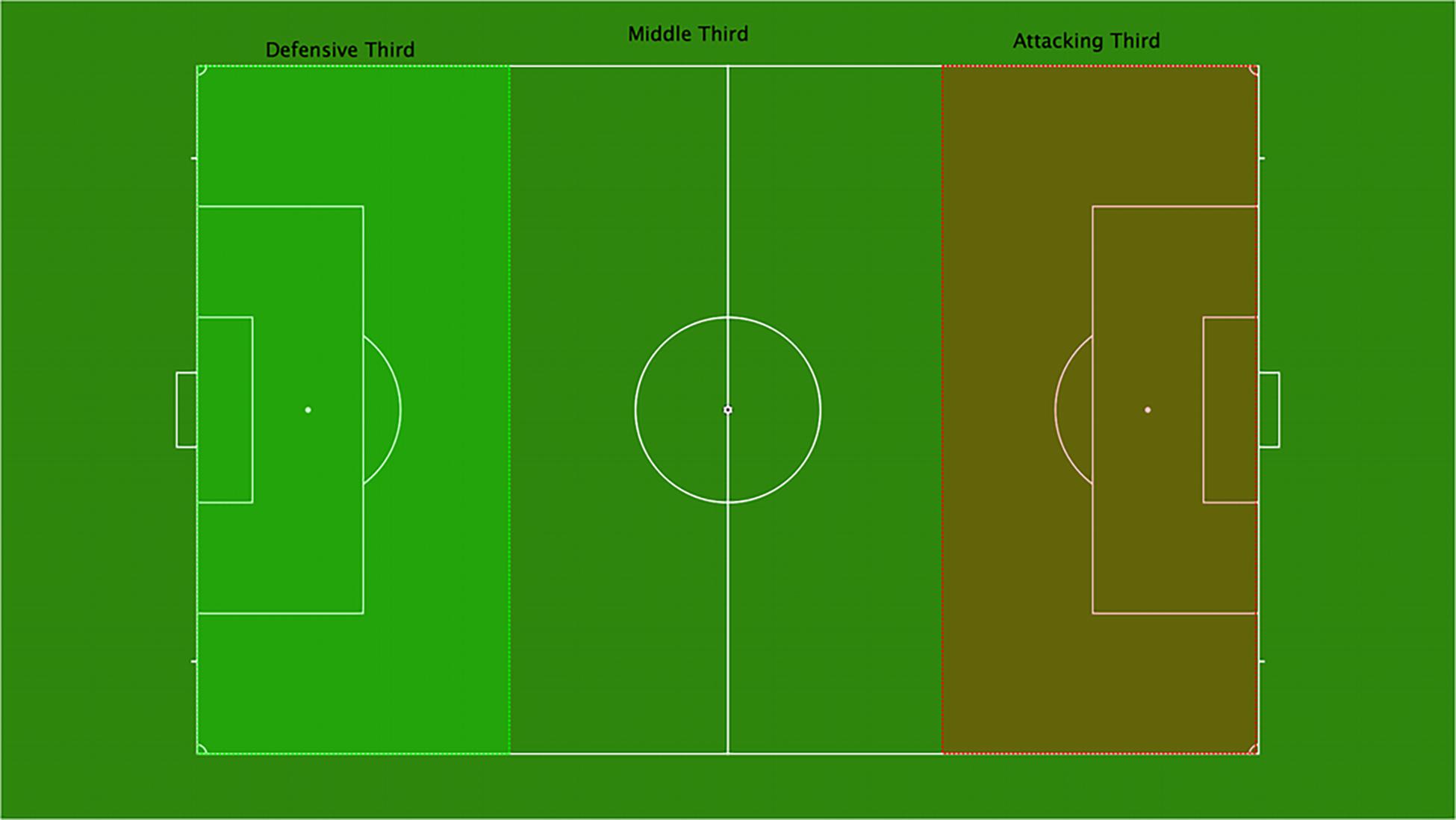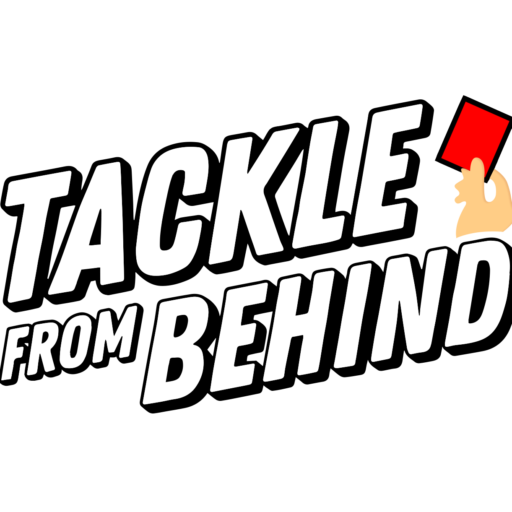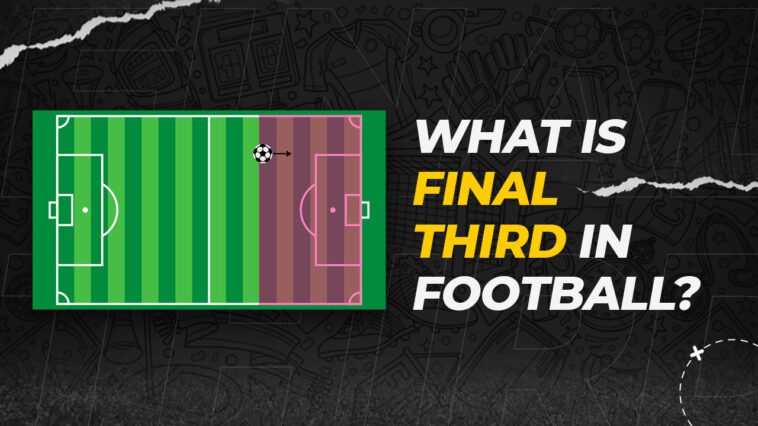If you watch football, you must have come across the term “final third” either from a commentator using it during the telecast or the post-match analysis or from the coach himself during the post-match interview.
In this article, we will talk about the meaning of the final third and its significance. If you’re also baffled when you hear the term “final third” then this article is for you.
What is the Final Third?
The football field is divided into three parts: the defensive third, the middle third, and the attacking third. Each area is important in its own way.
The defensive third is where teams start building their attacks. The defenders or goalkeeper move the ball up to the middle third.
In the middle third, the midfielders get the ball and try to move it forward into the final third.
The final third is the last part of the field, closest to the opponent’s goal. This area is where teams try to score! It’s all about creating great chances and putting the ball in the net.

The final third is where the real action happens. Players need to be precise, creative, and make smart decisions in this zone. It’s not easy with defenders swarming around!
The best teams in the world are deadly in the final third. They can carve open defenses and find those killer scoring opportunities that win matches.
So when you hear someone mention the “final third,” they’re talking about that crucial area right in front of the goal where games are decided!
Key Components of the Final Third
Getting Through: In the final third, the attacking team wants to break through the defense. They do this by passing accurately, dribbling past players, or playing sneaky through balls to create shooting chances.
Keeping the Ball: Holding onto the ball in the final third is key. Teams do this by making short, precise passes and moving off the ball smartly. This keeps the pressure on the defense.
Creativity: The final third is where players get creative! They use their vision, quick thinking, and skills to create goal-scoring opportunities. This could mean fancy dribbling, nutmegs, or well-timed crosses.
Scoring Goals: The main goal in the final third is to put the ball in the net! Strikers and attacking midfielders need to be composed and clinical when finishing their chances.
Width and Overlaps: Using the full width of the pitch is important. Wingers and full-backs hug the touchlines or make overlapping runs, creating space and crossing opportunities.
The final third is all about unlocking defenses and scoring goals through skillful play and intelligent movement. The best teams make it look easy!
Role of Final Third in Attack
In attack, the final third is where teams push players forward. The best sides have at least one player in each of the five main areas during their attacks. So you’ll see a minimum of five attackers in the final third.
This vital zone is where teams create great scoring chances when they have the ball. It’s where they put in dangerous crosses and take shots at goal. Good free-kick and penalty opportunities also happen in the final third.
It gets really intense and exciting here! Teams crowd this area trying to break down the defense. Defenders have to stay concentrated to block shots and clear the danger.
The final third is all-out attack mode. For the team in possession, it’s about finding that killer final pass or getting efforts on target. For the defenders, it’s about holding firm and not giving up clear-cut chances.
When your team is on the attack, you’ll be on the edge of your seat watching the final third action. Will they carve out a shooting opportunity? Can the striker stay composed to finish it off? So much drama!
Role of Final Third in Defence
When a team doesn’t have the ball, the final third becomes really important for a different reason. If the other team starts building their attack, the attackers have to get involved in defense too.
Their job is to put pressure on the opposition’s goalkeeper and defenders when they have the ball. The attackers will try to win it back right in the final third area.
This is called “pressing” and it happens when a team sends players to hassle the other side high up the pitch. The final third is where this intense pressing takes place as they look to quickly regain possession.
Instead of staying forward looking to score, the attacking players now become the first line of defense. They have to work hard, maintain their shape, and try to force mistakes or block passes.
It’s all about suffocating the opposition and not letting them play out from the back comfortably. If the pressing is effective in the final third, it can lead to turnovers and counterattacking opportunities.
So in defense, the final third becomes a battleground where attackers have to roll up their sleeves and fight to win the ball back for their team through disciplined pressing.
What are the entries and the tactics used in the Final Third?
Coaches create different tactics for their teams to enter the final third. These tactics depend on the team’s strengths and the weaknesses of the opponents. There are 5 main entry points into the final third:
– The left wide area
– The left inner area
– The central area
– The right inner area
– The right wide area
Once in the final third, teams have a few options. They can cross the ball into the box from the wide areas for tall, physical strikers to attack. Or they can overload one particular area with more players than the defense. This lets them pass quickly and move into the box to score.
The best teams use different entry points and tactics to surprise the defense. They might cross from wide one time, then overload the middle the next. Keeping the opposition guessing is key in the final third!
So when you see a team make their way into that crucial area, watch closely. How are they trying to create scoring chances? Wide crosses or overloading in the middle? Spotting these tactics will help you appreciate the game even more.
Conclusion
The final third is where the real drama unfolds in football. It’s the battleground where attacks are launched and games are won or lost.
The most successful teams have mastered this crucial area. They know how to carve open defenses with clever movement, vision and pinpoint passing. Their strikers stay cool under pressure to finish chances clinically.
Mastering the final third shows a team’s true quality. This intense zone creates legends and winners. Keep your eyes locked on the action here. That’s where the real magic happens!
FAQ
What are the thirds in football?
On the football field, there are three areas called thirds. The first third is at your own goal – that’s the defensive third. The middle section is the midfield third. And the last third, closest to the opponents’ goal, is the attacking third.
What is final pass in football?
In football, a final pass is a key pass made in the opponent’s final third to create a goal scoring opportunity. The final third is the area of the field closest to the opponent’s goal, roughly the last third of the pitch.
What is the attacking third?
The attacking third in football refers to the area of the field closest to the opponent’s goal. It’s roughly the last third of the playing surface, starting from the penalty area and stretching up to the halfway line.



